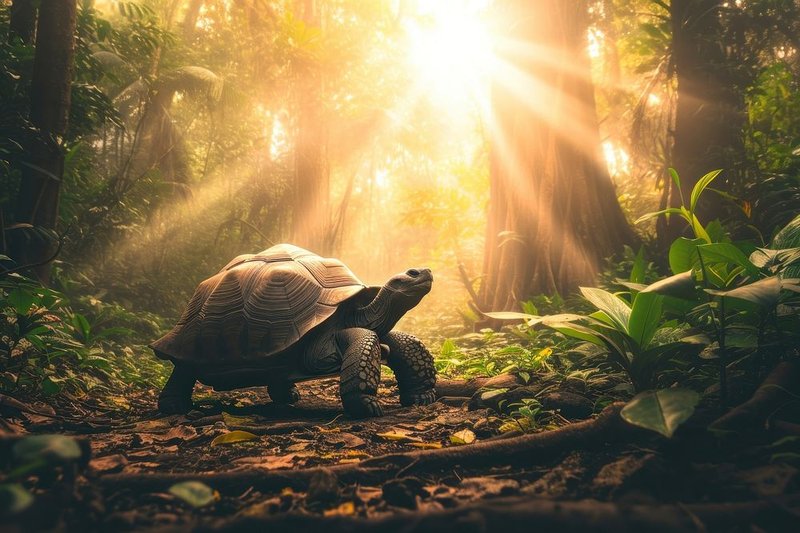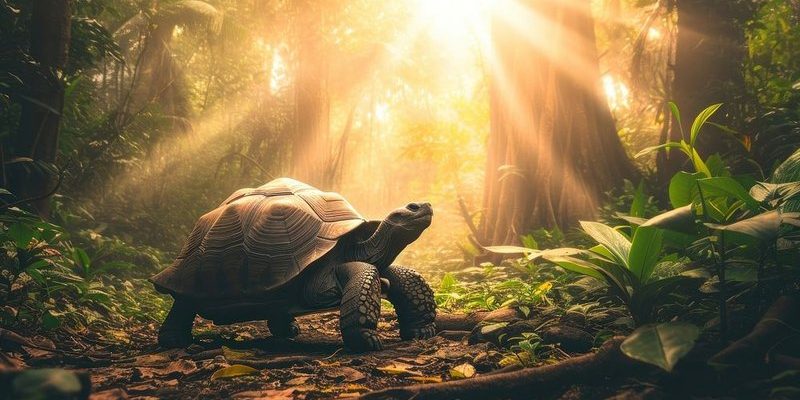
Let’s dive into the world of tortoises and explore how these remarkable reptiles fit into the bigger picture of their habitats. From their diet to their interactions with other species, understanding the tortoise is key to appreciating the balance of nature. So grab a comfy seat and a cup of coffee as we uncover the many layers of the tortoise’s life in the wild.
Understanding Tortoise Habitats
Tortoises can be found in various habitats, ranging from arid deserts to tropical forests. Their environments are essential to their survival. These habitats offer everything a tortoise needs to thrive. Desert tortoises, for instance, have adapted to dry conditions, using their burrows to escape the heat. In contrast, aquatic tortoises enjoy wetland areas with plenty of vegetation for food.
Each tortoise species has a specific habitat preference based on temperature, moisture, and food availability. For example, the Galápagos tortoise prefers the islands’ volcanic highlands, where it can find lush grasses and succulent plants. On the other hand, the Mediterranean tortoise often resides in drier, scrubby landscapes. These specific habitat needs highlight the importance of conserving their environments. If we disturb their homes, we risk impacting their survival.
You might be wondering, “Why should I care about tortoise habitats?” Here’s the thing: When we protect these environments, we’re also protecting countless other species, including plants, insects, and other animals. Tortoises, as herbivores, contribute to their ecosystem in ways many may not realize.
The Tortoise’s Diet and Feeding Habits
Let’s talk food. Tortoises are primarily herbivores, meaning their diet consists mostly of plants. They munch on a variety of vegetation, including grasses, leaves, fruits, and flowers. This diet is essential for their health and the health of their ecosystems.
By eating plants, tortoises help control the growth of certain vegetation, which can support a diverse plant community. Imagine a field overflowing with wildflowers. Tortoises play a role in keeping that environment balanced by preventing overgrowth of particular plants.
Now, you might think that being a slow eater is a disadvantage, but it’s actually an asset. Tortoises have a unique digestive system that allows them to extract nutrients efficiently from fibrous plant material. This slow but effective digestion means they can thrive in habitats where food is scarce.
Interestingly, some species even have mutualistic relationships with other animals. For example, small birds may follow tortoises to eat insects stirred up while they forage. This natural teamwork benefits both parties involved, showcasing the interconnectedness of life in their habitats.
Reproduction and Lifecycle of Tortoises
Reproduction is a critical aspect of a tortoise’s role in its habitat. Female tortoises usually lay eggs in sandy nests dug into the ground. The number of eggs can vary considerably by species, with some laying only a few, and others laying dozens. Once the eggs hatch, the tiny tortoises face an uphill battle.
Survival rates can be low due to predation and environmental factors, but those that do grow have a significant role in their environment. Young tortoises contribute to the plant community by grazing, helping maintain a balanced ecosystem.
As tortoises mature, they become part of the circle of life. They live long and can influence their habitat for decades. Their presence ensures that the plant life remains healthy, which in turn supports other wildlife. If you think about it, tortoises are like the grandfathers of their ecosystems, nurturing and shaping the environment through the years.
Interactions with Other Species
Tortoises are not solitary beings; they interact with various species in their habitats. These interactions can be symbiotic or competitive, depending on the circumstances. For example, when tortoises graze, they might unintentionally clear pathways for other animals to access food and shelter.
In some ecosystems, tortoises serve as prey for larger predators. This role is vital for maintaining the balance of the food chain. Their presence helps control predator populations, promoting diversity. The absence of tortoises can result in an overabundance of certain species, which can have cascading effects on the ecosystem.
Moreover, tortoises have a unique relationship with plants. Some plants rely on tortoises to help disperse their seeds. As tortoises eat fruits and vegetation, the seeds pass through their digestive systems and end up in new locations, allowing the plants to spread. This process is essential for the health of many plant species and, subsequently, the overall ecosystem.
You might not realize it, but each tortoise contributes to a web of life that supports various forms of wildlife. Their interactions enrich their habitat and ensure that nature remains resilient.
Conservation and the Future of Tortoises
As vital as they are, tortoises face numerous threats today. Habitat destruction, climate change, poaching, and invasive species put their survival at risk. It’s essential to acknowledge that when we protect tortoises, we protect entire ecosystems.
Conservation efforts are crucial in maintaining the delicate balance in tortoise habitats. Many organizations are working on habitat restoration and protection, including creating reserves and breeding programs. These initiatives help ensure that tortoises can thrive in the wild.
You might be wondering, “What can I do to help?” Here are a few things you can do:
- Educate others about the importance of tortoises in ecosystems.
- Support wildlife conservation organizations focused on tortoise protection.
- Participate in local habitat restoration efforts when possible.
By taking these steps, you contribute to a brighter future for tortoises and the environments they inhabit.
The Importance of Tortoises in Ecosystems
Ultimately, tortoises play a crucial role in maintaining the health of their ecosystems. Their eating habits, reproductive strategies, and interactions with other species help preserve the balance of nature. They act as herbivores, seed dispersers, and prey, each role contributing to the overall functionality of their habitats.
Ignoring the importance of any species can lead to unforeseen consequences. Tortoises may seem like simple creatures, but their presence is vital. As we face environmental challenges, it’s essential to remember that every species plays a part in the complex tapestry of life on Earth.
In conclusion, understanding the role of tortoises in their natural habitats enriches our appreciation of the natural world. The next time you come across a tortoise, take a moment to think about its significance—not just as an individual, but as a key player in an intricate system that supports life. By protecting tortoises, we’re also protecting our planet.

